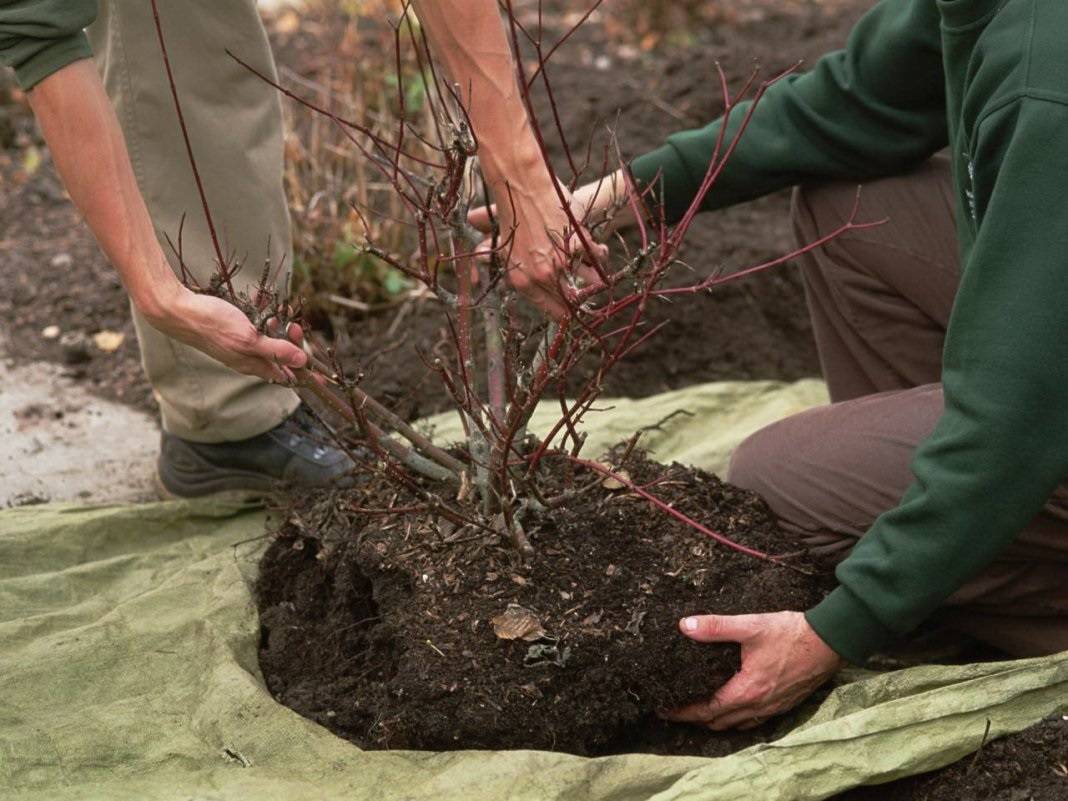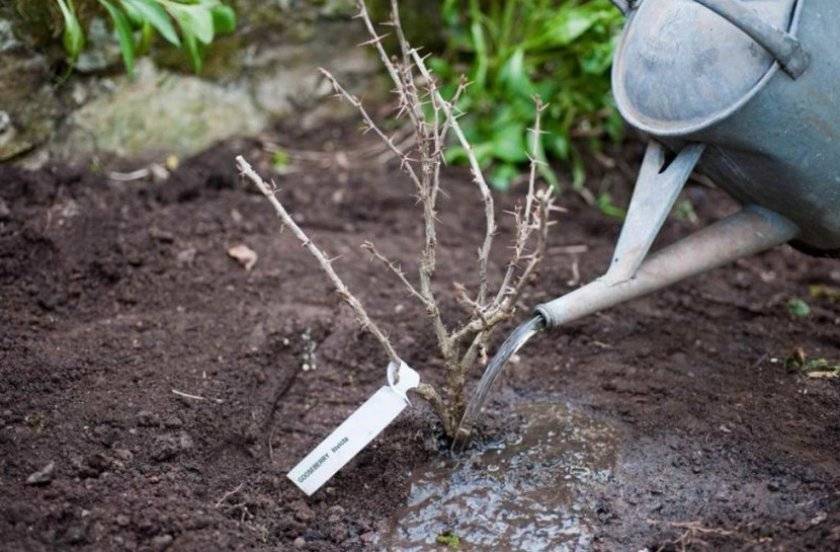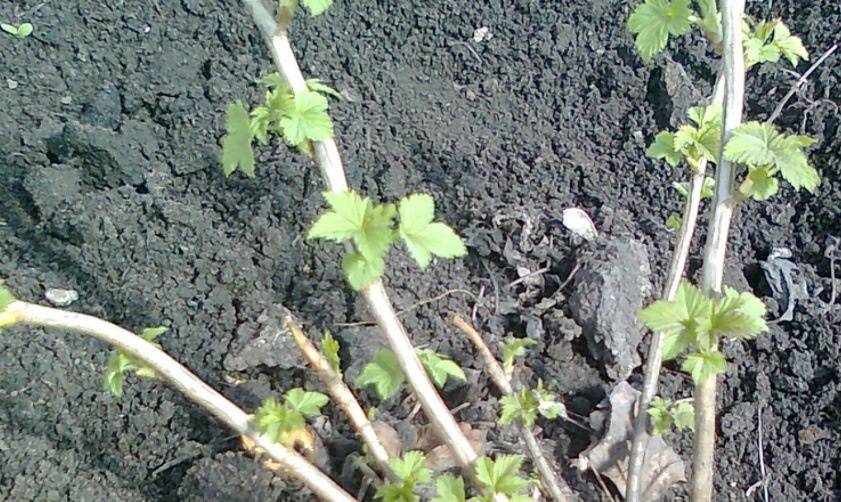When to transplant gooseberries to a new location
Content:
Gardeners are often faced with the need to transplant cultivated plants. This may be required for various reasons, ranging from a disease of the plant, to the need to change the location to a more favorable one for growth. Shrubs tolerate the procedure in different ways. In order for the plant to take root, you need to follow certain rules on how to transplant gooseberries.
When do you need to transplant gooseberries
There are many reasons why a transplant may be required. Most often, this becomes necessary due to the wrong choice of location. It is not always possible for a gardener to take into account the size of the future bush when planting. As a result, during the growth process, the gooseberry begins to take away all the nutrients from neighboring crops.
A transplant is imperative if the shrub is infected with a disease. Sometimes this is the only way to save the plant.
How to transplant gooseberries to a new location
Before proceeding with the transplant, you need to prepare the bush itself. It is cleaned of old and broken branches, and areas affected by pests are removed. The remaining healthy shoots must be shortened by one third.
Favorable conditions for growth
Gooseberry is a light-loving culture. For its active growth, it is necessary to choose sunny areas protected from the wind. The plant prefers fertile soil. It is important that the groundwater level is 1.5 m from the soil surface.
What the plant does not like
Gooseberries should not be planted where raspberries and currants previously grew. This is due to the fact that plants actively absorb nutrients. The soil on which they grew will be completely depleted. There is a risk of gooseberry disease due to weakened immunity. Tomatoes can be good neighbors, which will protect the bush from insects.
The bush loves light loamy soil. It bears fruit best of all on black soil. If soil acidification occurs, lime and dolomite flour are added to it.
Site selection and soil preparation
When choosing a place for a gooseberry transplant, you need to take into account that he loves light and moisture, but in moderation. You cannot plant a plant in a lowland to avoid stagnant moisture. Prolonged exposure to water will cause the roots to rot.
The place must be protected from the wind, so it is best to choose a site along the fence at a distance of 1.5 m.
For abundant fruiting, fertilizer can be prepared in advance. A mixture is made from the topsoil and compost. The components are taken in a 2: 1 ratio. Landing holes are covered with them.
Preparing bushes for transplanting
Before replanting the gooseberry, the bush is prepared as follows:
- Cut off old shoots. It is enough to leave six or seven young people.
- The remaining shoots are shortened by a third.
- A circle of 30 cm is outlined from each bush.When digging up the plant, they chop off all the roots that are at a distance of more than 30 cm.
The bush must be removed from the hole very carefully so as not to damage the roots.
Lump transplant instructions
Transplanting a gooseberry lump takes very little time. To complete it, you need to do the following:
- Prepare the bush correctly.
- Dig the base around it 30 cm.
- Remove a lump with roots from the pit using a crowbar or a shovel.
- Transfer to polyethylene, keeping a clod of earth on the roots.
- Prepare a pit 50 cm deep in a new place, pour three buckets of water into it, wait until it is completely absorbed.
- Mix part of the soil with compost, fill the hole with the bush with this mixture.
- Drizzle and sprinkle with soil on top.
Rules for caring for gooseberries after transplantation
It is not enough to just transplant the gooseberries from place to place, it is important to ensure proper care after that. Immediately after transplanting, you need to mulch with a layer of peat. This will help keep moisture in the soil longer. Shoots must be cut to the lower buds.
After that, regular watering must be observed, before which a layer of mulch is first removed, after which it is returned back. It is not necessary to insulate the bush for the winter, it is enough just to fill it with sawdust slightly.
If the transplant is carried out in the spring, then the procedure for leaving changes slightly. Watering should be less intense to prevent waterlogging. Regular weeding and feeding the bush with complex fertilizers are added.
When is it better to transplant gooseberries: in autumn or spring
One of the most pressing questions for gardeners before transplanting concerns the timing. Both spring and autumn are suitable for this. But it is best to choose the autumn months, when the plant has ended its fruiting period.
When to transplant gooseberries in spring
It is possible to organize a transplant in the spring, but in this situation it is very difficult to determine the exact timing. The bush will begin to form buds early. If the timing is wrong, you can freeze the bush. Each region has its own optimal terms. If we are talking about the southern regions, then it will be possible to harvest from the transplanted bush already at the end of May.
Is it possible to transplant gooseberries in April
In the northern regions, a transplant is permissible not in March, as is accepted by general rules, but in April. It is important to have time to start all planting work before the start of sap flow.
When is the best time to transplant in the fall
Transplanting gooseberries to a new place in the fall is much easier than in the spring. It is best to do this from late September to early October. During this period, the plant enters a dormant phase, its vital activity slows down. The exact date should be linked to the weather forecast. Before the onset of frost, the shrub must have time to take root.
Is it possible to transplant in the summer
Gardeners who did not have time to carry out the procedure in the spring, the question arises whether it is possible to transplant gooseberries in June. But in such a situation, you may be faced with the fact that the shrub will not take root. It is best to plant a seedling that was previously placed in a pot and managed to root there.
What mistakes are most often made by gardeners
The most common mistakes gardeners make are:
- separation of the earthy coma from the roots. After this, the plant does not take root well, it may start to hurt;
- transplant into poor soil without fertilization. The shrub will lack nutrients;
- using cold water when watering after transplanting. The optimum temperature for a plant is considered to be from 18 ° C.
If the transplant is completed on time, the plant is provided with proper care, this guarantees a good survival rate and a rich harvest. The main thing is to choose the timing in time.




















